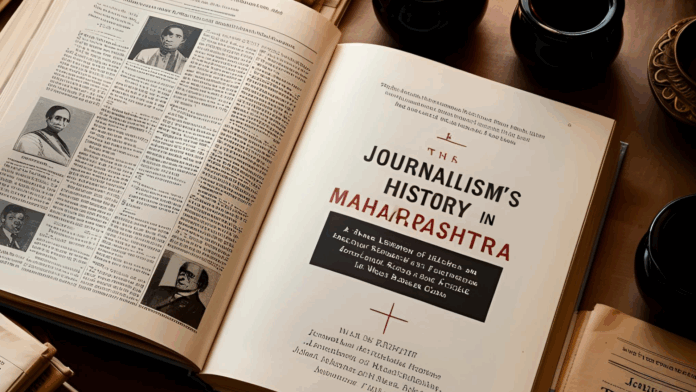📰 History and Evolution of Journalism in Maharashtra: A Legacy of Reform and Resistance
Maharashtra occupies a pivotal position in the annals of Indian journalism. It is not merely a contributor to the national media narrative—it is a foundational pillar, particularly in the context of freedom struggle journalism, vernacular press development, and media-led social reform movements.
🔹 The Birth of Vernacular Journalism
The journey began in 1832, when Balshastri Jambhekar, revered as the father of Marathi journalism, launched Darpan, the first Marathi-language newspaper. It was a bilingual publication, also featuring English content, aimed at educating the Indian middle class and bringing reformist ideas to the forefront. Darpan laid the foundation for a vibrant regional press that would play a critical role in shaping public opinion in colonial India.
This marked not just the beginning of Marathi journalism but also introduced the concept of using print as a tool for enlightenment, education, and civil discourse among the native population under colonial rule.
🔹 Rise of Nationalist Journalism: The Kesari Era
The late 19th century witnessed a dramatic transformation of the media landscape in Maharashtra with the entry of Bal Gangadhar Tilak, one of India’s most influential nationalist leaders. In 1881, Tilak founded Kesari (Marathi) and The Mahratta (English), which became powerful platforms for nationalist thought and anti-British sentiment.
Kesari, especially, became a people’s paper—a publication that combined fiery editorials with grassroots reporting, igniting political consciousness among the masses. Tilak used journalism not merely as a profession, but as a revolutionary instrument to mobilize support for Swaraj (self-rule). The paper’s bold stand against British injustice led to frequent censorship and even imprisonment of its editors.
🔹 Media Hubs: Pune and Mumbai
Pune and Mumbai emerged as twin epicenters of journalistic activity in Maharashtra. Pune became a hub of ideological journalism—home to thinkers, reformers, and freedom fighters who used the press to challenge orthodoxy, casteism, and colonial repression. Meanwhile, Mumbai evolved as a cosmopolitan media center, fostering a blend of English and vernacular journalism and offering infrastructure for large-scale publication and distribution.
Mumbai also became the headquarters for several national newspapers, news agencies, and later, broadcast media. Its port city character allowed early exposure to international journalistic trends, making it a center for modern news practices and professional journalism education.
🔹 Journalism and Social Reform
Maharashtra’s journalistic tradition is deeply entwined with social reform movements. Stalwarts like Jyotirao Phule and Dr. B.R. Ambedkar used journalism as a means to fight caste discrimination, promote education among marginalized communities, and demand social justice.
- Phule’s writings in the Marathi press were critical of Brahmanical dominance and advocated for universal education.
- Ambedkar edited publications like Mooknayak and Bahishkrit Bharat, which amplified Dalit voices and laid the foundation for social rights journalism.
This tradition fostered a unique model of activism-oriented journalism—media not just as an observer, but as an active agent of social change.
🔹 Legacy and Impact
The history of journalism in Maharashtra is not just about newspapers or iconic editors—it is about media’s role in nation-building, reform, and resistance. The state’s press legacy nurtured a culture of:
- Investigative rigor
- Intellectual depth
- Democratic engagement
Its early investment in vernacular press, freedom of expression, and editorial courage has left an indelible mark on Indian journalism as a whole.
Even today, the Marathi media landscape—print, television, and digital—continues this legacy of fearless reporting and public-oriented journalism
📌 Evaluation Summary
- Historical Significance: Maharashtra’s journalism catalyzed both political revolution and social reformation.
- Ideological Diversity: From nationalist firebrands to rationalist reformers, the state hosted a wide spectrum of editorial ideologies.
- Vernacular Strength: Pioneered regional language journalism with a lasting impact on mass literacy and civic participation.
- Institutional Development: Mumbai remains a media capital of India, with robust infrastructure, journalism education, and press associations.
In conclusion, Maharashtra’s journalistic evolution is a reflection of its progressive social fabric and political assertiveness. It set the stage for journalism as both a profession and a mission, laying the groundwork for the ethical, independent, and impactful media India aspires to today.









